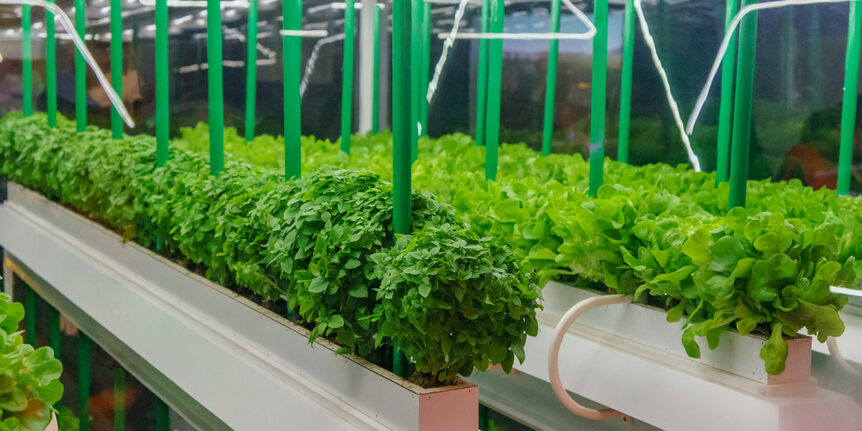Energy Resources Integration (ERI) in collaboration with Southern California Edison (SCE) recently completed a Market Characterization of Indoor Agriculture. This study focuses on fully indoor non-cannabis horticulture, also known as Controlled Environment Agriculture (CEA). The demand for fresh produce in densely populated regions, combined with external forces such as drought, fires, and climate change, have propelled the development of urban farming across the globe. The CEA industry has not (yet) taken off in California the way it has in other places, but when it does, utilities want to be prepared. SCE engaged ERI for this study to understand from key industry stakeholders where the market is headed, what they can expect for the southern California market and resulting grid impacts, and what demand-side management strategies can be most effective to encourage energy efficiency for their CEA customers.
Maintaining temperature, humidity, water, and proper air circulation are extremely energy-intensive operations. This study examined the CEA industry with a focus on the potential for energy efficiency and GHG emissions reduction. ERI and SCE hypothesized a few key outcomes from this study, including:
- The trends of the industry with vertical farming as a new subsector in the agricultural market in California.
- Projections of energy consumption and load profiles of indoor ag which will bring impactful challenges to both supply side as well as demand side management.
- Technology considerations beyond lighting – including HVAC, pumping, and CO2 – will be critical to address holistically. This interactive complexity lends itself well to advanced control strategies.
- Numerous non-energy benefits, from water savings to the societal impact of growing food within the community.
- From a greenhouse gas perspective there are tradeoffs in comparison to traditional crop farming techniques, and further potential related to energy efficient technologies, designs, and controls.
ERI conducted interviews with industry stakeholders including growers, vendors, associations, and utilities. Interviews sought to understand the current practices involved, equipment used, trajectory of the industry, operational challenges, and technological priorities. Decision drivers and barriers to utilizing energy efficient equipment in CEA facilities was discussed in detail with stakeholders to obtain a vast range of perspectives.
Recommendations pertaining to energy efficiency program design and implementation were provided in the report. These include such items as baseline considerations, steps to stimulate market adoption, program components, technology assessments, and intervention strategies. Key results such as the assessment of energy savings and GHG reduction per facility and per technology (lighting, HVAC controls, etc), market potential, and assessment of barriers and solutions provided the foundation for program-level action.
Take a look at the study here and let us know what you think!

